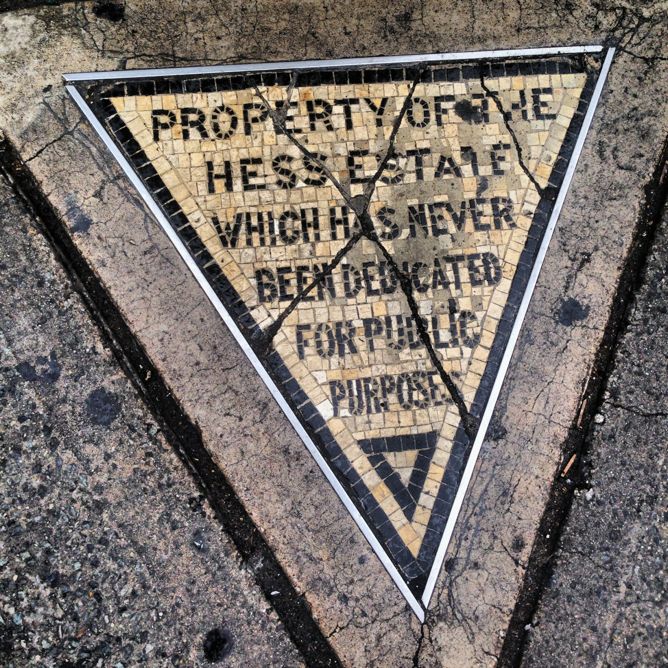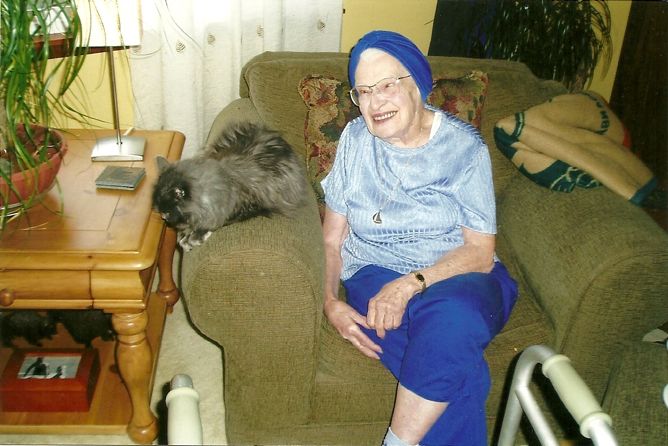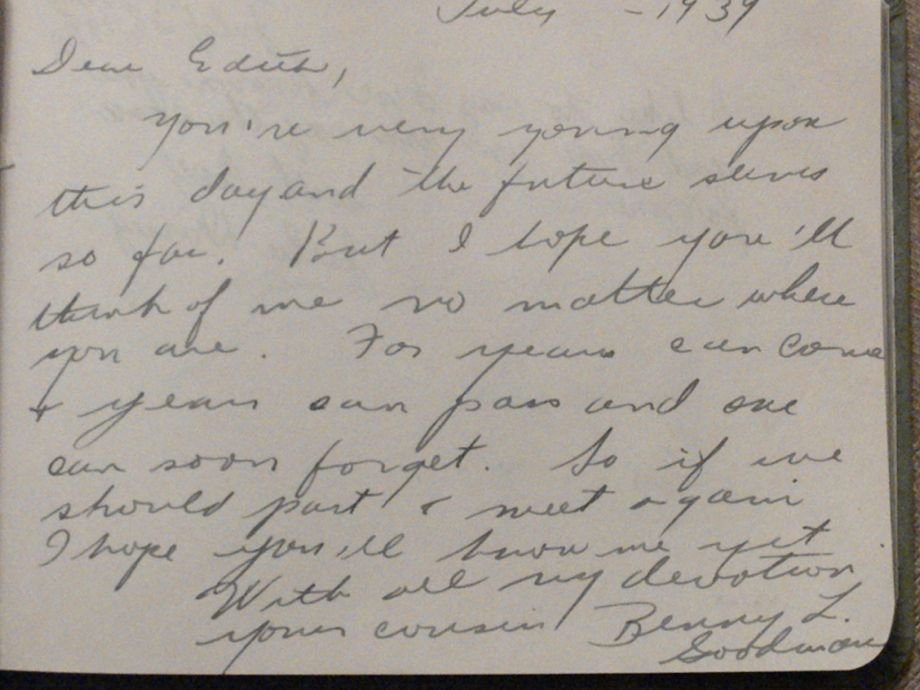What Happens to “Holdouts” Who Refuse to Sell Their Homes to Developers?

Courtesy of Ben Tesch/Flickr
Roman Mars’ podcast 99% Invisible covers design questions large and small, from his fascination with rebar to the history of slot machines to the great Los Angeles Red Car conspiracy. Here at The Eye, we cross-post new episodes and host excerpts from the 99% Invisible blog, which offers complementary visuals for each episode.
This week's edition—about holdouts—can be played below. Or keep reading to learn more.
In 1914, the government of New York City took ownership of a Manhattan apartment building belonging to David Hess. The city used a legal power called eminent domain, which allows a government to seize private property for public use—in this case New York City wanted to expand the subway system. Hess fought them and lost, and when all was said and done, his building was torn down, and he was left with a triangle-shaped piece of property. It was about the size of a large slice of pizza.
Later, the city tried to get him to donate his pizza-shaped property so that they could build a sidewalk. He refused again. They built the sidewalk anyway, and in the middle of the sidewalk is Hess’ triangle, with a tile mosaic that reads:

Courtesy of Sam Greenspan
People such as Hess, who refuse to sell their properties, are called “holdouts.” Eminent domain generally only comes into play when the government wants private property for public use (though there have been some exceptions). If it’s a private development that wants your place and you refuse to sell, there’s often not much the developer can do. In China, where there’s been a development boom in recent years, they call their holdout houses “nail houses.”
Around 2005, a Seattle neighborhood called Ballard started to see unprecedented growth. Condominiums and apartment buildings were sprouting up all over the community, which had once been mostly single-family homes and small businesses. Around this time, developers offered Edith Macefield $750,000 for her small house, which was appraised at around $120,000. They wanted to build a shopping mall on the block where Macefield had lived for the past 50 years.
Macefield turned down the money. Developers went forward with the shopping mall anyway. The mall enveloped her house on three sides.
The architects designed the building in such a way that if Macefield ever decided to move, they could easily incorporate the space where her house had been into the building. The developers eventually increased their offer to $1 million, plus they offered to find her a similar home somewhere else and pay for a home health care worker for Macefield, who was elderly and in poor health.
Again, Macefield turned them down.

Courtesy of Barry Martin
The press loved Macefield’s “David and Goliath” story of an old woman versus the big bad developers. But even though the press was clamoring to talk to Macefield, she wanted nothing to do with talking to them (as evidenced by this CBS segment).
Slowly, Macefield warmed to some of the construction workers on the project, especially Barry Martin, the project superintendent who would check in on her occasionally and drop off business cards, telling her to call if she needed anything.
She eventually asked Martin to take her to a hair appointment. Soon thereafter, Martin began taking Macefield to all of her appointments. Spending all of this time together, Martin got to know Macefield well. He learned that she wasn’t mad about the way her community was changing. She wasn’t even mad about the mall they were building more or less on top of her house. On the contrary, she seemed happy to have the company.

Courtesy of Barry Martin
Macefield was an avid reader and loved to talk about books, listen to old music (a lot of opera and big-band music, according to Martin), and watch old movies. She played both saxophone and clarinet and was also a writer. Her longest work was 1,138 pages of fiction entitled Where Yesterday Began, which she self-published in 1994 under the pen name “Domilini.”
As Martin got to know Macefield, she told him stories about her past that were so incredible that he found them hard to believe. She said that she’d been a spy for the U.S. during World War II and had spent time in the German concentration camp of Dachau. She also said she’d taken care of a number of war orphans in England after the war with her then-husband, James Macefield. And on top of all of that, she claimed that Benny Goodman was her cousin and that she had played music with Tommy and Jimmy Dorsey.
Martin eventually became Macefield’s main caregiver—making most of her meals, visiting with her on weekends, and even attending to her in the middle of the night if she called and said she needed him. She finally agreed to a live-in nurse when she was diagnosed with pancreatic cancer, but even then, Martin became her power of attorney—the person whom she put in charge of her final decisions.
Macefield died in her house on June 15, 2008, at age 86.
She left her house to Martin—the construction superintendent who became her friend while simultaneously sandwiching her house between a Trader Joe’s and an LA Fitness. After she died, Martin began packing up Macefield’s house and looking for things that would confirm the crazy stories she told about her past. He never found anything about her escaping Dachau or caring for any war orphans. But he did find a Benny Goodman record with a written inscription that said “To my cousin Edith, with love, Benny.” He also found this correspondence:

Courtesy of Barry Martin
After people found out that Macefield had left her house to Martin, there were some who called him an opportunist. Ultimately it’s hard for anyone other than Martin to know what his motivations were, but we did talk to a couple of the health care workers who took care of Macefield before she died, and they both had a very high opinion of him—they said that he was there every day when no one else was and that he seemed to care deeply for Macefield.
Martin eventually sold Macefield’s house to an investor who had various plans for it, none of which have materialized, and recently that same investor asked Martin if he’d be interested in buying it back.

Courtesy of Kathy Mulady
The house is all boarded up now, and no one’s sure what will happen to it, which is sad to some people. But Martin says that Macefield didn’t care what happened to the house after she died—that she never really cared about the bigger story that the outside world had created about her. She had her own personal reasons for staying in her house, and they had nothing to do with that narrative.
Whatever her reasons were for doing it, she stood her ground. And she became a symbol, whether she wanted to or not. There’s even a tattoo shop in Seattle that does a special tattoo to honor Macefield’s legacy. It’s a picture of her little house, and underneath it—the word “Steadfast.”
To learn more, check out the 99% Invisible post or listen to the show.
99% Invisible is distributed by PRX.
